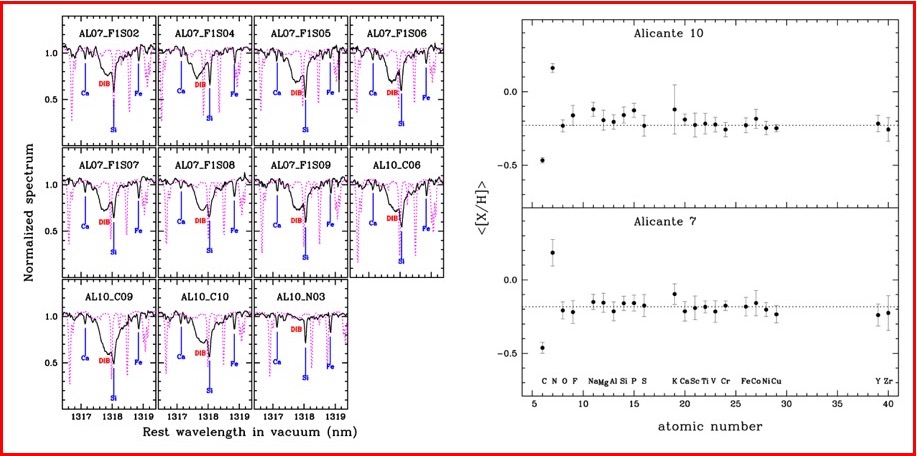GIANO-B spectroscopy of red supergiants in the Scutum complex: detailed chemistry of Alicante 7 and Alicante 10 associations
The unique combination of HARPS-N (High Accuracy Radial velocity Planet Searcher in North hemisphere) and GIANO-B echelle spectrographs at the Telescopio Nazionale Galileo (TNG), which together cover almost the full optical and NIR range out to the K band, is ideal to sample the luminous stellar populations of the the Milk Way thin disk over almost its entire extension, as seen from the Northern Hemisphere at a spectral resolution R>=50,000.
We proposed a Large Program called the 'SPA - Stellar Population Astrophysics: detailed age-resolved chemistry of the Milky Way disk' (Program ID A37TAC_13, PI: L. Origlia) and observing time has been granted starting from June 2018.
Within the SPA Large Programme, we secured GIANO-B high-resolution (R=50,000) YJHK spectra of 11 red supergiants toward the Alicante 7 and Alicante 10 associations near the RSGC3 cluster in the Scutum complex at a Galactocentric distance of about 4 kpc and with a huge (AV>>10 mag) extinction. Taking advantage of the full YJHK spectral coverage of GIANO in a single exposure, we were able to measure several hundreds of atomic and molecular lines that are suitable for chemical abundance determinations. We also measured a prominent diffuse interstellar band at lambda=1317.8 nm (vacuum), providing an independent reddening estimate for each star. By means of spectral synthesis and line equivalent width measurements, we obtained chemical abundances for iron-peak, CNO, alpha, other light, and a few neutron-capture elements. We found average slightly sub-solar iron abundances and solar-scaled [X/Fe] abundance patterns for most of the elements, consistent with a thin-disk chemistry. The slightly sub-solar metallicity of the Scutum complex is intriguing because metal abundances well in excess of solar have been measured in the thin disk at larger Galactocentric distances. This suggests that the recent star formation in the Scutum complex may have occurred from a gas that was not as enriched as expected, and one possible explanation is dilution by metal-poor halo gas driven there by dynamical interactions of the disk with the Galactic bar and the Scutum spiral arm. We also found depletion of [C/Fe], enhancement of [N/Fe], and relatively low 12C/13C<15, which is consistent with CN cycled material and possibly some additional mixing in their atmospheres.

The left panel of the figure shows the portion of the normalized telluric corrected spectra, showing the prominent DIB feature at 1317.8 nm. The dashed purple line is the telluric correction applied to the data. The right panel of the figure shows the derived average [X/H] chemical abundances and corresponding errors for the observed red supergiants, candidate members of the Alicante 7 and Alicante 10 associations. Dotted lines mark the average [Fe/H] values in each association. Adapted from L. Origlia, E. Dalessandro, N. Sanna, A. Mucciarelli, E. Oliva, G. Cescutti, M. Rainer, A. Bragaglia and G. Bono, 2019, A&A, 629, A117

